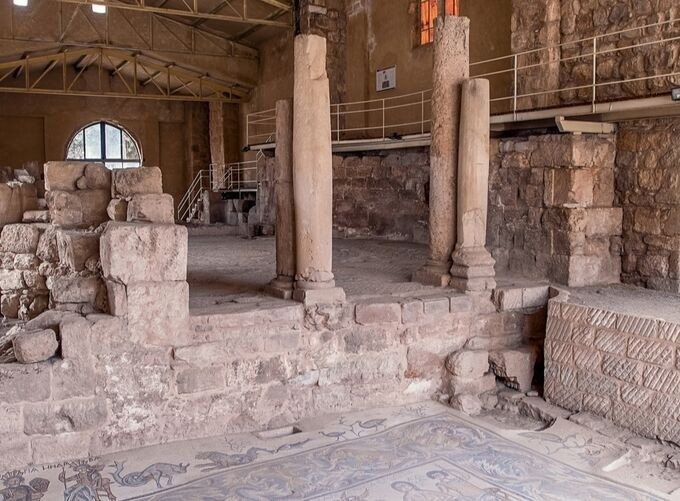
Jordan Current Time: Local Time & Timezone Info
Understanding the Current Time in Jordan: A Comprehensive Guide
Jordan, a nation rich in historical significance and natural beauty, occupies a pivotal position in the Middle East. Whether you're coordinating a business meeting, planning a trip, or simply curious about the time in Jordan, understanding its current time practices is crucial. This guide explore Jordan's time zone, historical context, cultural perceptions of time, and practical tips for navigating time in this dynamic country.
Introduction Jordan
Time is a fundamental aspect of daily life and international interactions. In Jordan, understanding the current time is essential for various activities, from managing business schedules to exploring the country’s historical landmarks. This comprehensive guide will delve into Jordan’s time zone practices, historical evolution, and cultural context, providing valuable insights for residents and visitors alike.
Geographical Overview of Jordan
Jordan is located in the Middle East, bordered by Israel and Palestine to the west, Syria to the north, Iraq to the northeast, and Saudi Arabia to the south and east. The country has a diverse landscape, including the Jordan Valley, the Dead Sea, and vast desert regions. Jordan’s geographical position influences its time zone and its interaction with neighboring countries.
Time Zones Explained
Jordan’s Current Time Zone
Jordan operates on Eastern European Time (EET), which is UTC+2. During daylight saving time (DST), Jordan follows Eastern European Summer Time (EEST), which is UTC+3. The shift to EEST typically occurs in the spring and reverts to EET in the autumn.
Jordan’s adherence to this time zone helps synchronize its activities with other countries in the region and supports international business and travel.
Comparison with Neighboring Countries
Jordan’s time zone aligns with several neighboring countries, though there are differences in daylight saving practices:
Israel: Israel follows Israel Standard Time (IST), which is UTC+2 during standard time and UTC+3 during DST, creating a one-hour difference with Jordan during the summer months.
Saudi Arabia: Saudi Arabia operates on Arabian Standard Time (AST), which is UTC+3 year-round. This results in a one-hour time difference between Jordan and Saudi Arabia during standard time.
Syria: Syria also uses EET (UTC+2) and EEST (UTC+3) for DST, aligning closely with Jordan’s time zone practices.
Iraq: Iraq operates on Arabian Standard Time (AST), similar to Saudi Arabia, leading to a one-hour difference with Jordan.
Historical Overview of Timekeeping in Jordan
Ancient Jordanian Timekeeping
Jordan’s history is deeply intertwined with ancient civilizations, including the Nabateans, Romans, and Byzantines. Timekeeping in ancient Jordan was influenced by these cultures:
Nabateans: Known for their advanced engineering and architecture, the Nabateans used sundials and water clocks to measure time.
Romans and Byzantines: The Roman and Byzantine periods introduced more sophisticated timekeeping devices, such as advanced sundials and clepsydras (water clocks), which were used in Jordanian territories.
Modern Adoption of Time Zones
Modern timekeeping in Jordan began to align with international standards in the 20th century. The adoption of the Eastern European Time Zone (UTC+2) facilitated Jordan’s integration into global trade and travel networks. The use of DST was introduced to optimize daylight usage during the longer summer months.
Daylight Saving Time (DST) in Jordan
History of DST in Jordan
Jordan introduced daylight saving time in the late 20th century to align with global energy-saving practices. DST involved moving clocks forward by one hour in the spring and setting them back in the autumn. This change aimed to extend daylight hours in the evening and reduce energy consumption.
Current Practices
Jordan has experienced fluctuations in its DST practices over the years. The country has periodically adjusted its approach to DST based on energy needs and public opinion. As of recent years, Jordan has been known to implement DST but has occasionally suspended it. The schedule for DST in Jordan generally involves:
Spring Forward: Clocks are set forward by one hour, typically in March or April.
Fall Back: Clocks are set back by one hour, usually in October or November.
These adjustments ensure that Jordan remains in sync with neighboring countries that observe DST.
How to Determine the Current Time in Jordan
Tools to Check the Time
To find the current time in Jordan, you can use several reliable methods:
World Clock Websites: Websites like timeanddate.com provide real-time updates for Jordan’s time zone.
Smartphones and Devices: Most smartphones automatically adjust to local time zones based on GPS and network signals.
Internet Searches: A quick search for "current time in Jordan" will provide you with the latest information.
Regional Differences
Jordan follows a single time zone (EET) throughout the country, with the exception of DST changes. This uniformity simplifies time management across regions, from Amman to Petra and Aqaba. However, daylight hours can vary between the northern and southern regions, affecting daily schedules.
Cultural Perceptions of Time in Jordan
Time in Jordanian Society
In Jordanian culture, time is viewed with a balance of respect for punctuality and flexibility. While business meetings and formal appointments are expected to be punctual, social events often have a more relaxed approach to time.
Business and Work Hours
Business Hours: Most businesses in Jordan operate from 9:00 AM to 5:00 PM, Sunday to Thursday. Friday and Saturday constitute the weekend, and many businesses are closed on these days.
Government Offices: Government offices typically open from 8:00 AM to 3:00 PM, although hours can vary based on specific departments.
Social Time and Religious Practices
Time also plays a crucial role in religious practices in Jordan, particularly in Islam. The daily prayer schedule is a key component of Jordanian life:
- Fajr: Before sunrise
- Dhuhr: Midday
- Asr: Afternoon
- Maghrib: Sunset
- Isha: Night
These prayer times influence daily routines and social activities, with many businesses and activities adjusting to accommodate prayer times.
Time Zones and International Relations
Jordan’s Role in International Trade
Jordan’s position in the Middle East makes it an important player in regional and international trade. Understanding Jordan’s time zone is crucial for businesses and governments engaged in trade and diplomacy:
Trade with Neighboring Countries: Jordan’s alignment with EET (UTC+2) facilitates trade with neighboring countries in the region, including Saudi Arabia, Israel, and Syria.
International Business: Managing time differences is essential for coordinating meetings and operations with global partners. Jordan’s time zone allows for convenient scheduling with Europe and other Middle Eastern countries.

Managing Time Differences for Global Business
To handle time differences effectively, businesses in Jordan and internationally use various tools:
Time Zone Converters: Online tools and apps help convert time zones for scheduling meetings and coordinating activities.
Automated Scheduling Software: Programs like Google Calendar and Microsoft Outlook adjust for time zone differences automatically, easing global communication.
Time and Tourism in Jordan
The Importance of Time for Visitors
Tourism in Jordan, For tourists, understanding the current time in Jordan is vital for making the most of their visit:
Tourist Attraction Hours: Major attractions, such as Petra, the Dead Sea, and Wadi Rum, have specific opening hours. Knowing the local time helps visitors plan their itinerary effectively.
Transport Schedules: Accurate timekeeping is essential for coordinating flights, buses, and other forms of transportation.
How Time Affects Travel Plans in Jordan
Traveling to Jordan from different parts of the world involves adjusting to local time differences. Key considerations include:
Jet Lag: Travelers from distant regions, such as North America or East Asia, may experience jet lag due to significant time differences.
Daylight Hours: Jordan’s daylight hours vary by season. Planning travel around daylight hours ensures that visitors can fully experience outdoor attractions and activities.
Technological Influence on Timekeeping in Jordan
Technology plays a significant role in timekeeping in Jordan. Smart devices such as smartphones, tablets, and computers automatically adjust to local time based on GPS and network signals.
Network Time Protocol (NTP): This system helps synchronize devices with global time standards, reducing the risk of errors.
Broadcast Time Signals: Jordanian radio and television broadcasters provide time signals to keep citizens informed of the correct time.
Digital Timekeeping in Jordan
The rise of digital technology has enhanced timekeeping precision in Jordan. From public transportation systems to financial services, accurate timekeeping is crucial for smooth operations.
Challenges and the Future of Timekeeping in Jordan
Potential Adjustments to Timekeeping
As Jordan continues to evolve, there may be discussions about potential changes to its timekeeping practices:
Daylight Saving Time: While Jordan has had periods of DST, future adjustments may be considered based on energy needs and public opinion.
Alignment with Global Standards: Jordan may evaluate its timekeeping practices in the context of global trends and international cooperation.
Adapting to International Trends
Jordan’s timekeeping practices will likely continue to adapt to global trends and technological advancements. Maintaining alignment with international time standards will remain crucial for business and communication.
Plan Your Unforgettable Trip to Jordan Today
Understanding the current time in Jordan is essential for managing various aspects of life, from business operations to travel plans. Jordan’s timekeeping practices, influenced by historical and cultural factors, play a vital role in the country’s daily life and international interactions. Whether you’re coordinating a business meeting, exploring Jordan’s historical landmarks, or planning a trip, having a clear grasp of Jordan’s time zone practices will help ensure a smooth and enjoyable experience. Luxury vacation in Jordan
FAQs
What time zone is Jordan in?
Jordan operates on Eastern European Time (EET), which is UTC+2. During daylight saving time, it follows Eastern European Summer Time (EEST), which is UTC+3.
How does Jordan’s time zone compare to other countries?
Jordan shares the same time zone (UTC+2) with several neighboring countries, including Syria. However, time differences with countries like Saudi Arabia (UTC+3) and Israel (UTC+2 or UTC+3, depending on DST) can vary.
How can I check the current time in Jordan?
You can check the current time in Jordan using world clock websites, smartphone apps, or a quick internet search.
Does Jordan observe daylight saving time?
Yes, Jordan has observed daylight saving time in the past but has made adjustments to its practices. It typically shifts to Eastern European Summer Time (UTC+3) during the summer months.
How does time affect daily life in Jordan?
Time influences various aspects of life in Jordan, including business hours, religious practices, and social activities. Understanding local time can help you navigate daily routines and interactions effectively.



